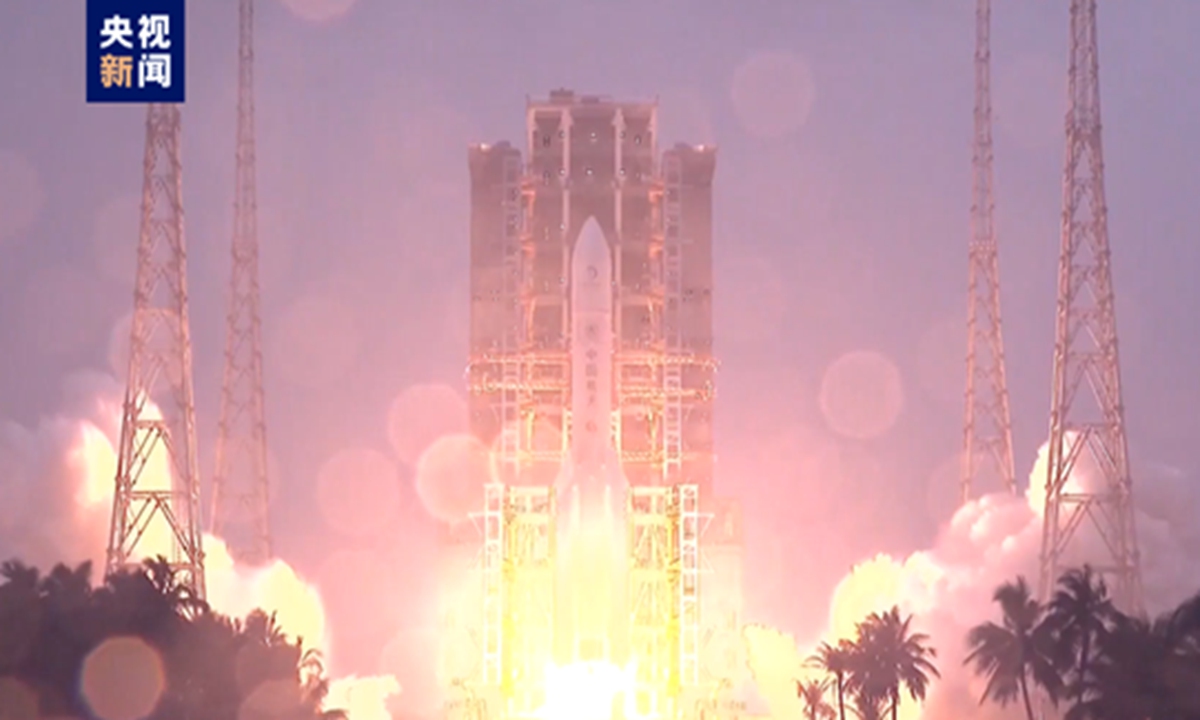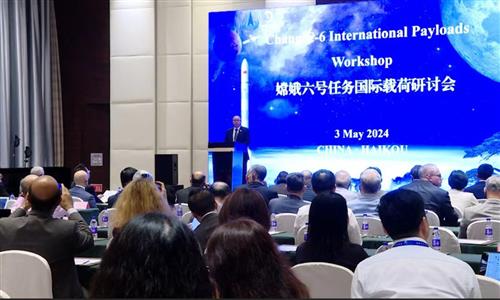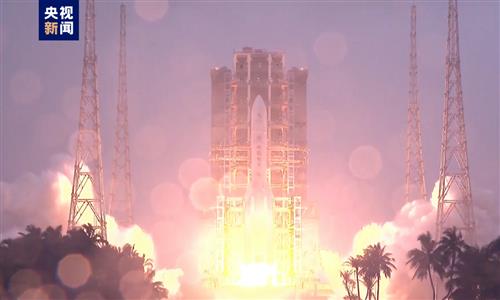
Photo: CCTV
China's Chang'e-6 lunar probe has successfully entered its circumlunar orbit after performing a near-moon braking procedure on Wednesday, according to the China National Space Administration (CNSA).
The near-moon braking procedure is a key orbital control action for the Chang'e-6 lunar probe during its flight. The probe should begin braking when approaching the moon to maintain a speed lower than the lunar escape velocity so that it could be captured by the moon's gravitational force and realize circumlunar flight.
If the braking is not applied hard enough and the speed is not reduced, the Chang'e-6 lunar probe will slide into outer space. On the other hand, if the braking is too strong, it could collide with the moon, according to the Xinhua News Agency.
The Chang'e-6 lunar probe consists of an orbiter, a returner, a lander and an ascender. The orbiter is equipped with an orbit control engine to control braking and deceleration during gravitational capture.
The development team also pioneered the design of the secondary thermal protection composite system, for the orbiter to wear a "super protective suit." Layers of protection keep the important payload machine on the orbiter away from high temperature, creating a comfortable traveling experience for the Chang'e-6, Xinhua reported.
The Chang'e-6 lunar probe will later adjust the altitude and inclination of its circumlunar orbit with the support of the Queqiao-2 relay satellite, and implement the separation of the orbiter and returner combination from the lander and ascender combination at an opportune time.
The lander and ascender combination will then make a soft landing on the South Pole-Aitken Basin and conduct a sample return mission on the far side of the moon as planned.
The entire flight of the Chang'e-6 mission is expected to last about 53 days, consisting of 11 flight phases, according to CNSA.
China has launched the Chang'e-6 spacecraft on Friday to collect and return samples from the moon's far side, which is the first endeavor of its kind in the history of human lunar exploration, according to Xinhua.
The fourth phase of China's lunar exploration program, led and organized by the CNSA, includes four missions: Chang'e-4, Chang'e-6, Chang'e-7 and Chang'e-8, with Chang'e-4 having achieved the world's first soft landing on the back of the moon.
The Chang'e-6 mission will carry out new planetary exploration missions and further upgrade the country's space launch capabilities in the next 15 years. Landing a Chinese national on the moon is expected to happen before 2030, according to previous reports.
The Chang'e-6 mission is also carrying four payloads developed through international cooperation, providing more opportunities for the world's scientists and merging human expertise in space exploration, according to Xinhua.
Global Times



